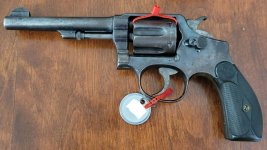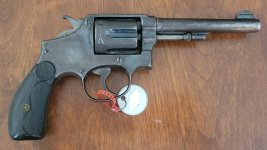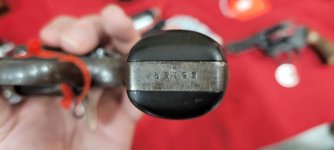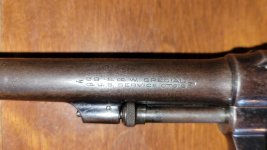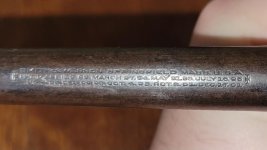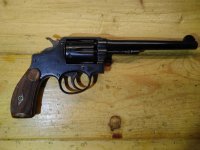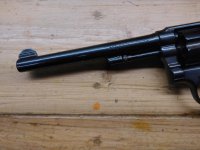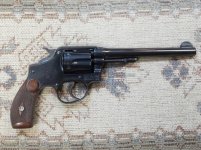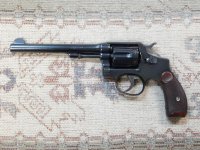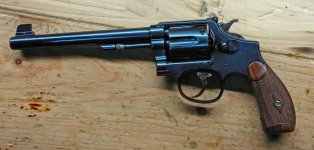Well, you're right about one thing, it's old!
My knee jerk reaction was it's not a Model of 1905, but of 1902; so I dug out a couple of letters; and sure enough, it's a 1902 something. The first one here is #21898, and the letter calls it an M&P Second Model Target----or Model 1902. It was shipped August 8, of 1902. The next one's on the other side of yours (#59794), and they're calling it a Model of 1902 First Change Target----shipped February 26, 1906. Actually, it wasn't shipped; they just carried it out into the shop, and gave it to what appears to be a Foreman named Burton. They speculate he might have had to do with the design of the square butt.
As to more or less current value, the first one fetched $2265 during the liquidation of my collection during the three years ending a a year ago----the second one did better---$2750. These values don't have much to do with yours, given mine had more finish, and were targets.
If you want to save money on haircuts, pop the sideplate off and have a go at taking yours apart for a bath. You'll either tear your hair out, or call for help. I did the latter, and a fellow forum member who's forgotten more than most folks know about these things bailed me out.
And while serial numbers aren't always much help in figuring things out, they save the day other times.
Ralph Tremaine
I just remembered something rather shocking! You'd think you'd never forget something like this: I bought both these guns at the same time at the same place from two gentlemen sitting at a table in the gun room of an SWCA Annual Meeting---Dallas maybe------looooooooooong time back. I paid maybe $6-800----FOR THE PAIR!!!! I reckon they just didn't know any better----I damn sure didn't! The only reason I bought them was because I didn't already have some like them. I reckon things like this are where that old saying about "Too soon we get old, and too late we get smart!" came from.

